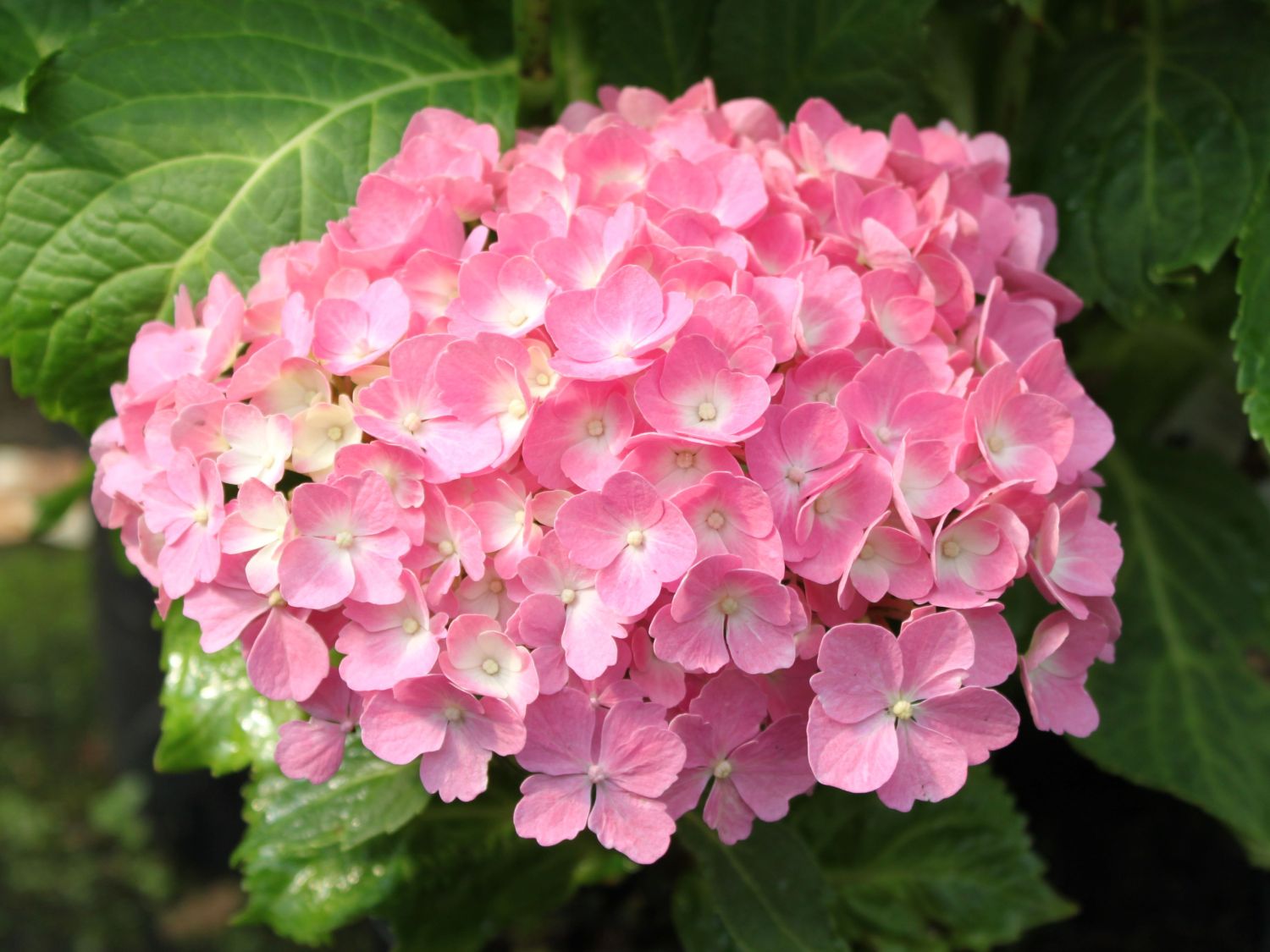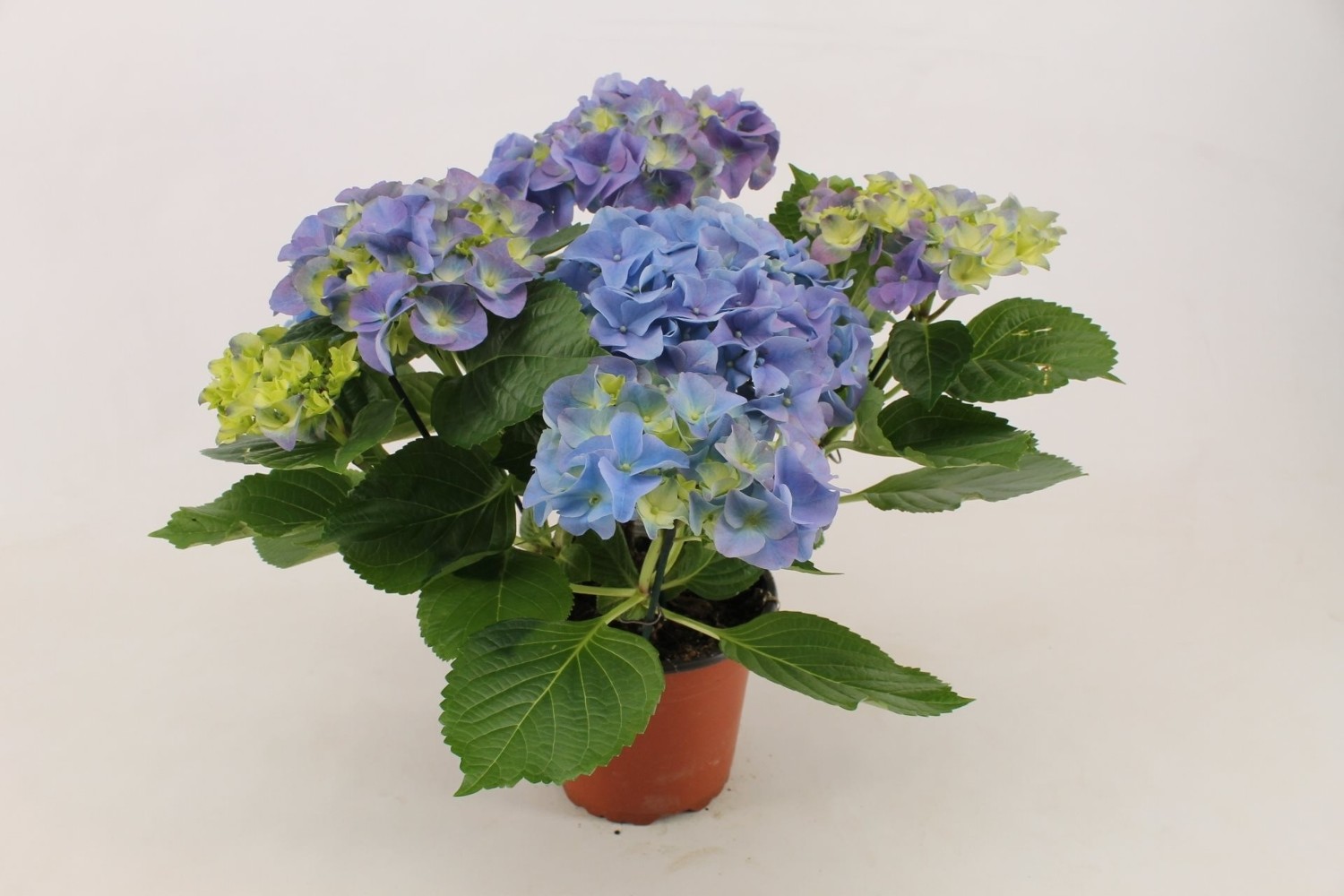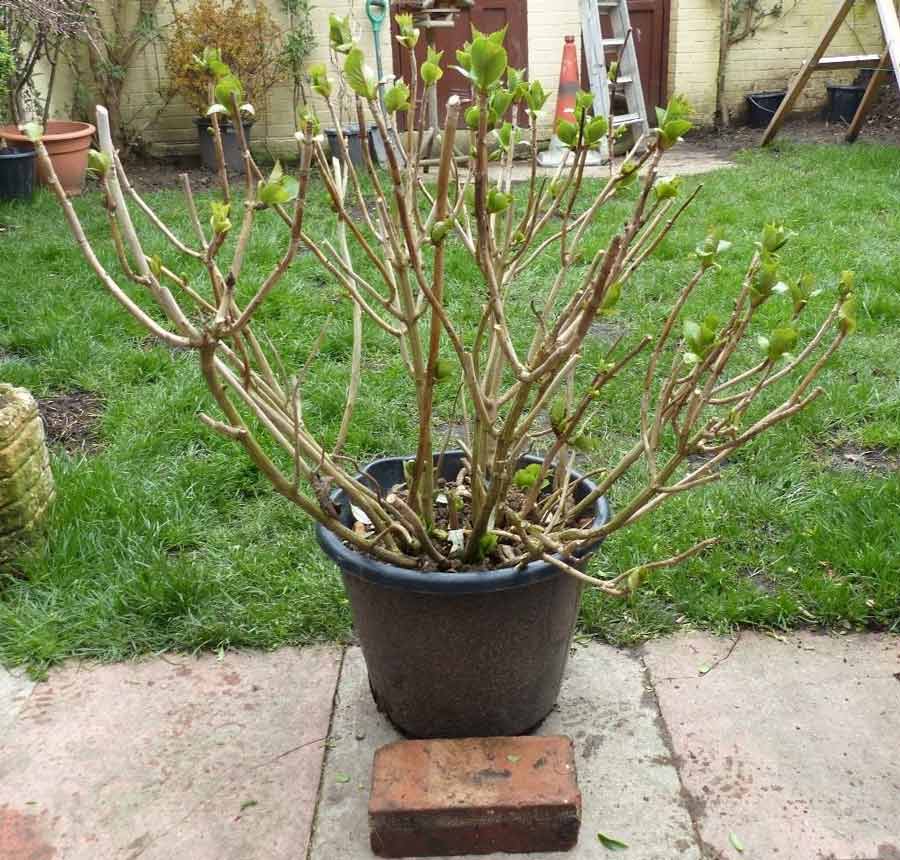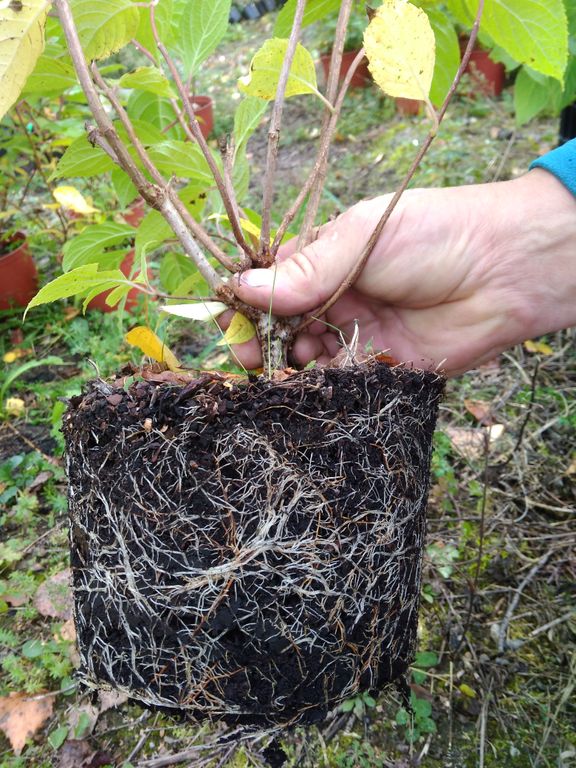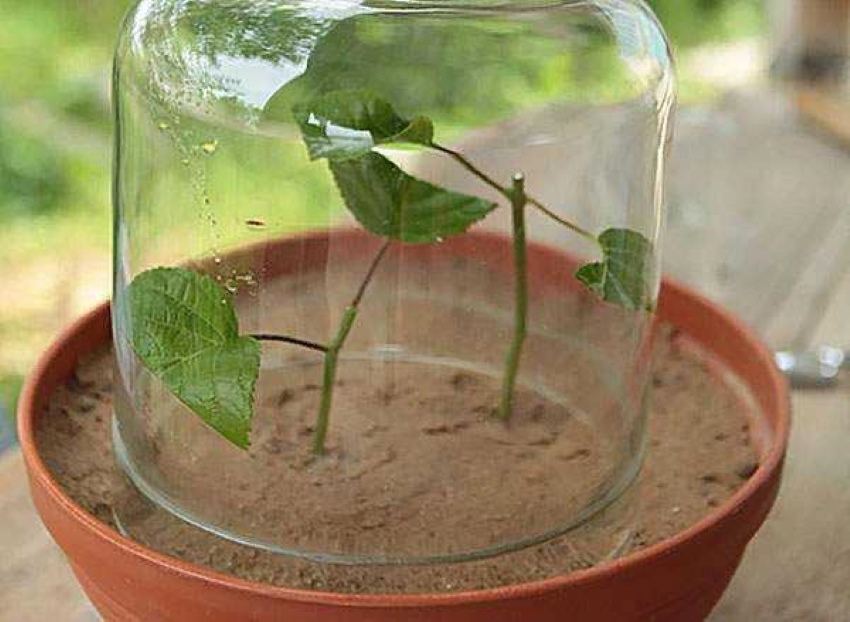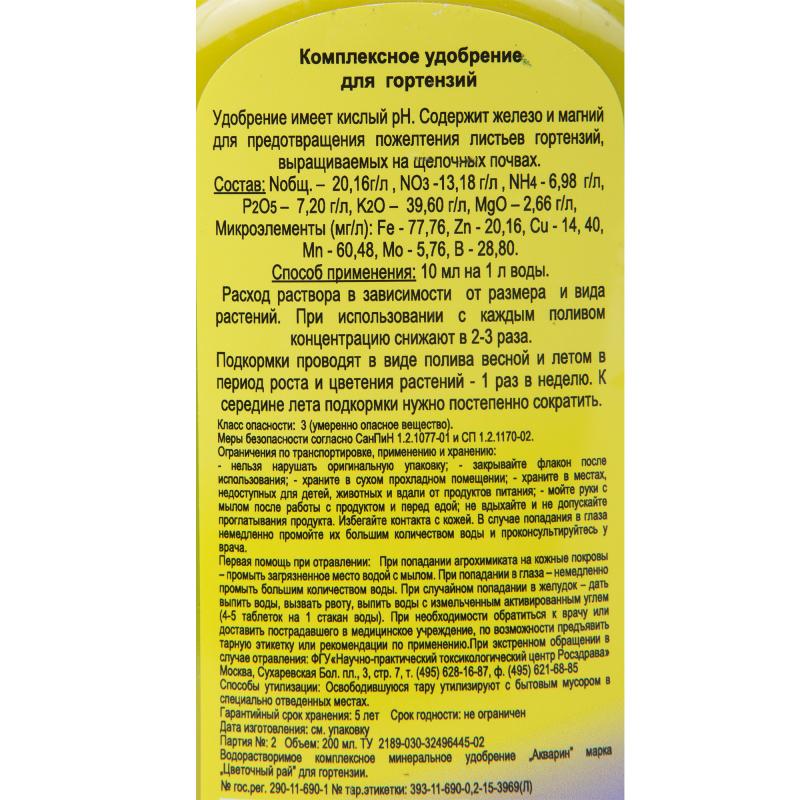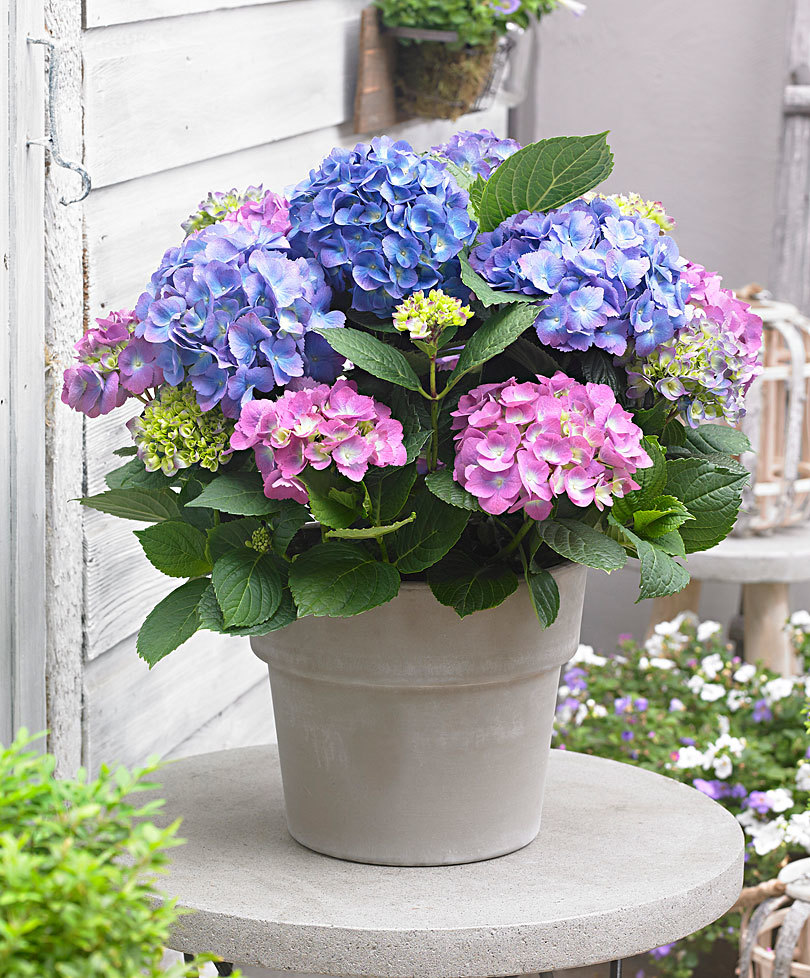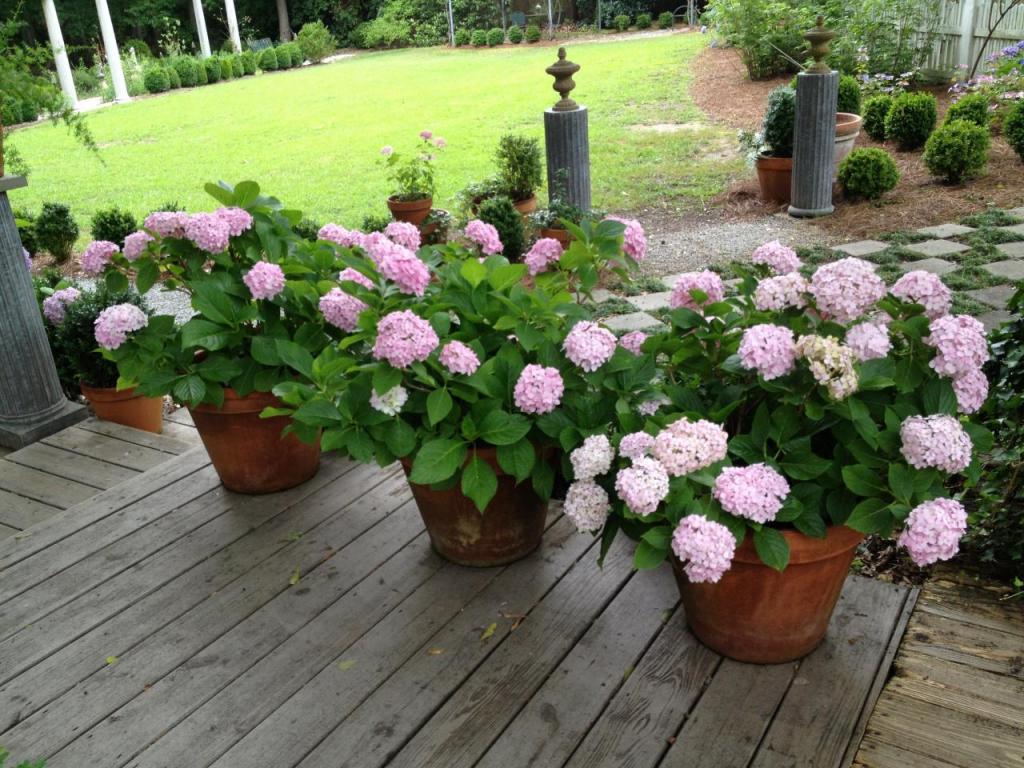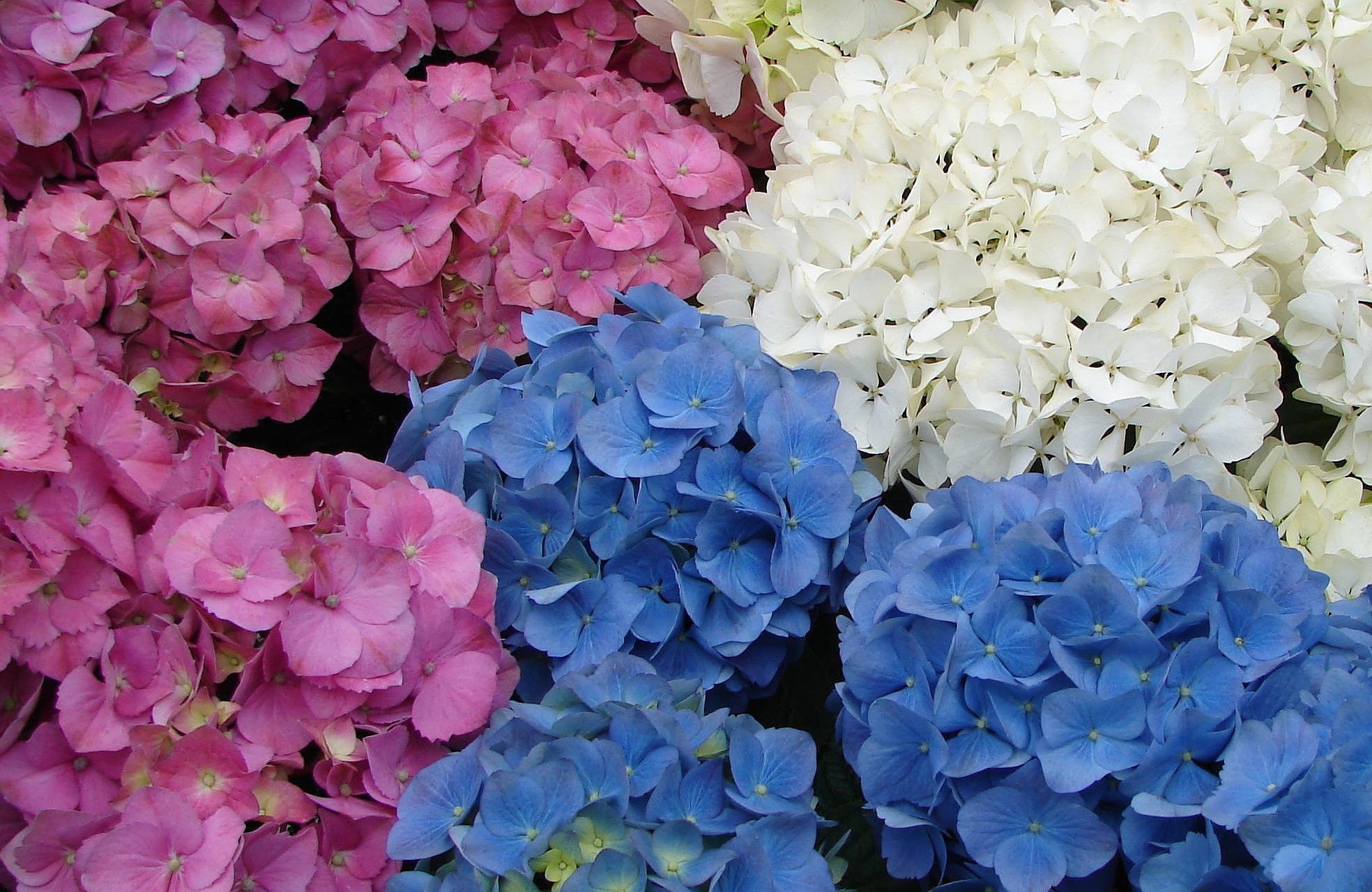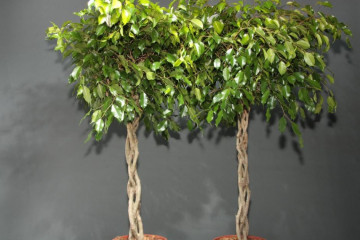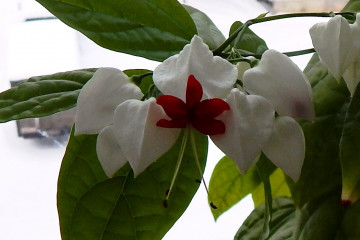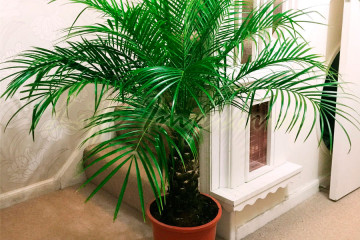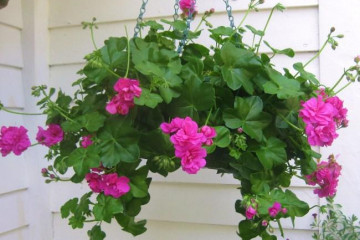Hydrangea - how to care and grow at home
Content:
Indoor hydrangea is a flowering pot plant capable of delighting with large inflorescences of different colors and shades from early spring to autumn.
Indoor hydrangea: how to care and grow
A real beauty, large-leaved hydrangea, which takes a long time to grow and care for at home, will not cause much trouble.
In the eighteenth century. French physician and naturalist F. Commerson, traveling across Japan, saw amazingly beautiful flowered and lush shrubs. The locals did not know its name, and Commerson named it a hydrangea after his beloved.
The selection of hydrangeas began in 1900. Then they bred indoor varieties, of which there are about 100 today.
The most popular varieties:
- Mme E. Mouillere (diameter of inflorescences 20 cm, white color, narrow leaves);
- Hamburg (inflorescence diameter 16 cm, pink color, bush height 40 cm);
- Earley Blue (bright blue inflorescences, tall).
Hydrangea is also called girdrangeya (lat.), And among the people - a barrel of water, which suggests that the flower is very hygrophilous. For the first time in Europe, hydrangea was brought from Japan in 1820.
Large-leaved indoor hydrangea is a bush with leaves up to 15 cm in length, light green in color with a pointed tip. If taken care of, the globular inflorescences will grow up to 20 cm in diameter. The height of the bush is from 1 to 1.5 m, therefore, in order for the flower to remain compact, it is treated with inhibitors, and the correct formation of the bush also contributes to this.
A large-leaved species can grow in a garden in the south of Russia, and in the Central strip (Moscow region), but only for the winter it will have to be covered. For outdoor cultivation, it is better to choose a garden variety.
If the indoor hydrangea has faded, what to do next
At home, the flower can start blooming in February. In this case, it will begin to bloom in July. After flowering, the leaves fall off the bush and the life processes slow down.
If a deciduous hydrangea is chosen, few growers know how to care for it. At this time, you should stop feeding and reduce watering. After the leaves fall, the bush should be cut off immediately. If you do not do this in time, the hydrangea will stop blooming altogether or give scanty ugly inflorescences. Weak shoots are removed completely, and young and strong ones are shortened in half. It's also time to plant a bush in a large pot.
In total, it is recommended to leave 5-6 shoots per bush.
Re-pruning is done in the spring. When the bush begins to grow vigorously, in order to prevent it from stretching, the tops of the shoots are pinched. At the same time, the bush becomes more compact and lush.
Transplanting hydrangeas into a new pot
After the leaves have fallen off and the plant has been pruned, it’s time to transplant it into a new pot.
Hydrangea needs to be transplanted once every 3-4 years, but she loves to be transplanted annually and thanks for this with lush flowering.The process itself, as for other plants, is stressful, planting should be quick and accurate.
The new pot needs to be taken larger than the old one. Since the roots of the flower do not grow deeper, but only grow in breadth, the depth of the pot can not be increased, but it is better to take the diameter 1.5 times more.
Drainage (crushed stone, expanded clay, gravel) must be poured at the bottom of the pot. Then the soil of the following composition is poured:
- sod land - 2 parts;
- sheet land - 1 part;
- peat - 1 part;
- sand - 0.5 parts.
Then, very carefully, using the transshipment method, it is necessary to rearrange the flower into a new flowerpot:
- Remove the bush together with the earthen lump from the old pot and move it to a new one.
- Fill the free space with prepared soil.
- Make sure that the root collar of the bush is above the soil.
- Squeeze the soil and spill it with water.
Soon the hydrangea will enter a dormant period, and the flower pot must be removed to the wintering site.
Reproduction by dividing the bush
Hydrangea propagates by seeds, dividing the bush and cuttings. The most laborious method is propagation by seeds, since they have poor germination and a low survival rate. And the most reliable and simple method is grafting.
If you use cuttings obtained during the spring formation of a bush, then by autumn a young bush with 2-3 shoots is already formed.
The stalk should be about 8 cm long and contain 3 internodes. The lower leaves of the shoot must be torn off, leaving only 2 upper leaves. The remaining leaves are shortened by half so that the young shoot gives all the strength to the development of the root system. You need to root the branches in pre-prepared pots, filling them with a mixture of peat and sand, and also cut the caps out of plastic bottles. The cuttings should be stuck in prepared moist soil and covered with caps.
The soil should always be moist. Every day the cap must be removed for 30-40 minutes to ventilate the soil. The cutting will take root in about a month, then it will already be possible to transplant it to a permanent place in a pot with a diameter of at least 10 cm.
When to fertilize
After a dormant period, the shrub needs strength to sprout young shoots, large strong leaves and many full and beautiful inflorescences. To help the plant, it needs to be fed.
The first feeding is done when the buds wake up and the buds are distilled in early February. At this time, the plant needs a lot of nitrogen. Further fertilization should be applied once every 2 weeks. For top dressing throughout the season, complex fertilizers for indoor flowers are suitable, which contain acids (hydrangea loves acidic soils) and there is no alkali (it can destroy the flower).
After flowering, top dressing is still needed to build up strength for next year, but they need to be gradually reduced and stopped altogether, approximately in the middle of autumn. In winter, fertilizers are not needed at all.
Hydrangea is an amazing flower, and the introduction of various substances into the soil can change the shade of the inflorescences. Moreover, their color may differ even on one bush, if you water it from different sides with different additives. For example, lime will give the inflorescence a lilac hue, a mixture of ash, humus and lime - pink, a mixture of peat and potassium sulfate - blue. White inflorescences grow on neutral soils. It turns out a hydrangea mix, home care for which is reduced to applying fertilizers according to the established scheme.
How to care for hydrangea during dormancy
In winter, hydrangeas have a dormant period. In the middle of autumn, the pot with the plant must be removed to a cool room with a temperature of 5-8 ° C.At the same time, he does not need lighting; for example, a cellar, a dry basement or an insulated loggia will do. Watering is reduced, but it is absolutely impossible to stop it so that the roots do not dry out. The rest period lasts 2-2.5 months, after which the pot is transferred to a warm and bright place for awakening. The change in temperature should be gradual, the flower cannot stand sudden changes.
Flower location, light and temperature conditions
For the location of the hydrangea pot, east and west windows are suitable. With direct and prolonged exposure to sunlight on the plant, it becomes stained and does not feel well, which is reflected in its appearance.
Do not forget that the flower comes from the subtropics and loves moist air. In summer, especially on hot days, the flower should be sprayed daily in the morning.
The plant pot can also be placed in a container of water according to the drainage level. At the same time, the humidity of the surrounding air will increase and the soil in the pot will be moistened.
Hydrangea loves watering and abundant care. She does not tolerate drying out, you need to carefully monitor the moisture content of the soil. But the plant will not grow in the swamp either, so the drainage in the pot should be at least 3 cm so that the roots do not start to rot.
The plant feels comfortable at room temperature, but does not tolerate heat and sudden temperature changes.
In general, large-leaved hydrangea is an undemanding plant. Growing for one season will not create any difficulties at all, even a beginner can handle it. But the long-term maintenance of a beauty will require some effort. This concerns the creation of conditions for wintering, regular watering, pruning and maintenance when extreme weather conditions occur. But for the effort spent, the plant will reward with long, continuous flowering of large, lush and very beautiful inflorescences, the shade of which can be adjusted with your own hands at will. Hydrangea will undoubtedly decorate both the house and the garden.
